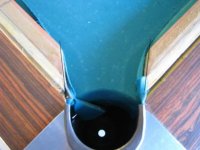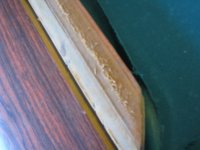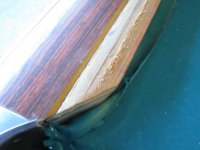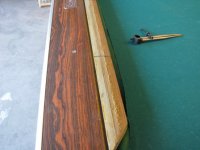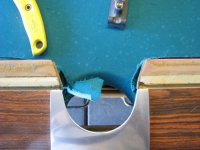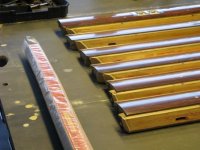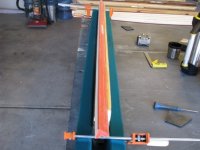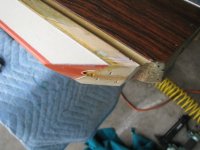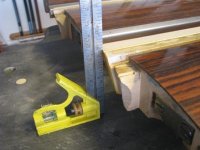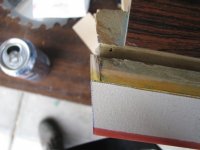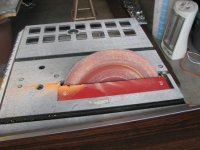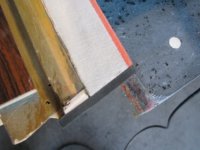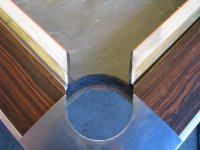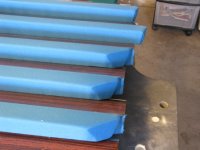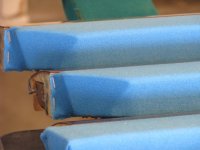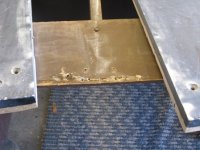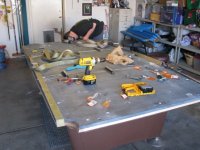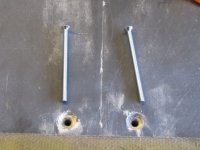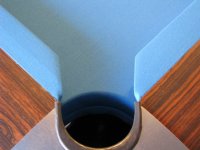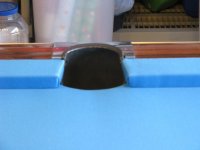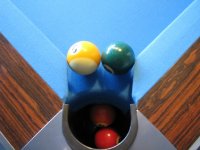This is what I was starting out with. This GC2 has 5 1/4" corner pockets to begin with, along with 5 3/4" side pockets. As you can see, the cushions are rotted. The facings were cookie hard, and didn't even match the ends of the cushions in the pockets. Making balls in the pockets were pretty hard as the pockets were also rounded at the points.
You are using an out of date browser. It may not display this or other websites correctly.
You should upgrade or use an alternative browser.
You should upgrade or use an alternative browser.
Fixed up another Gold Crown 2
- Thread starter realkingcobra
- Start date
The corner pocket angles are at 141 degrees, or in other words, cut at a 51 degree angle as you would read it on a chop saw. The factory angles were cut at 53 degrees. By changing the factory angles to 51 degrees it helps to shrink the mouth of the pocket without tightening the back of the pocket that much. The 2 degree angle difference also makes it a little more acceptable to pocket balls using a little more power in your stroke, as at that angle the balls have less tendency to rebound off the first pocket facing into the opposite side before being pocketed.
Attachments
In this picture, you can see by the edge of the cushion and extention, I changed the factory side pocket angles from 15 degrees to 12 degrees, this change also makes the pocket a little tighter, but also makes the balls pocket a little better.
Attachments
After dealing with the slates, I installed the bed cloth, note the lack of staples holding the cloth to the backer boards. I also stretched the cloth 2 1/2" wide from side to side, held in place with the glue I use only on the actual thickness of the side of the slate. The condition of the backer boards have no bearing on how I install the cloth, the slates don't even have to have them as far as I'm concerned.
